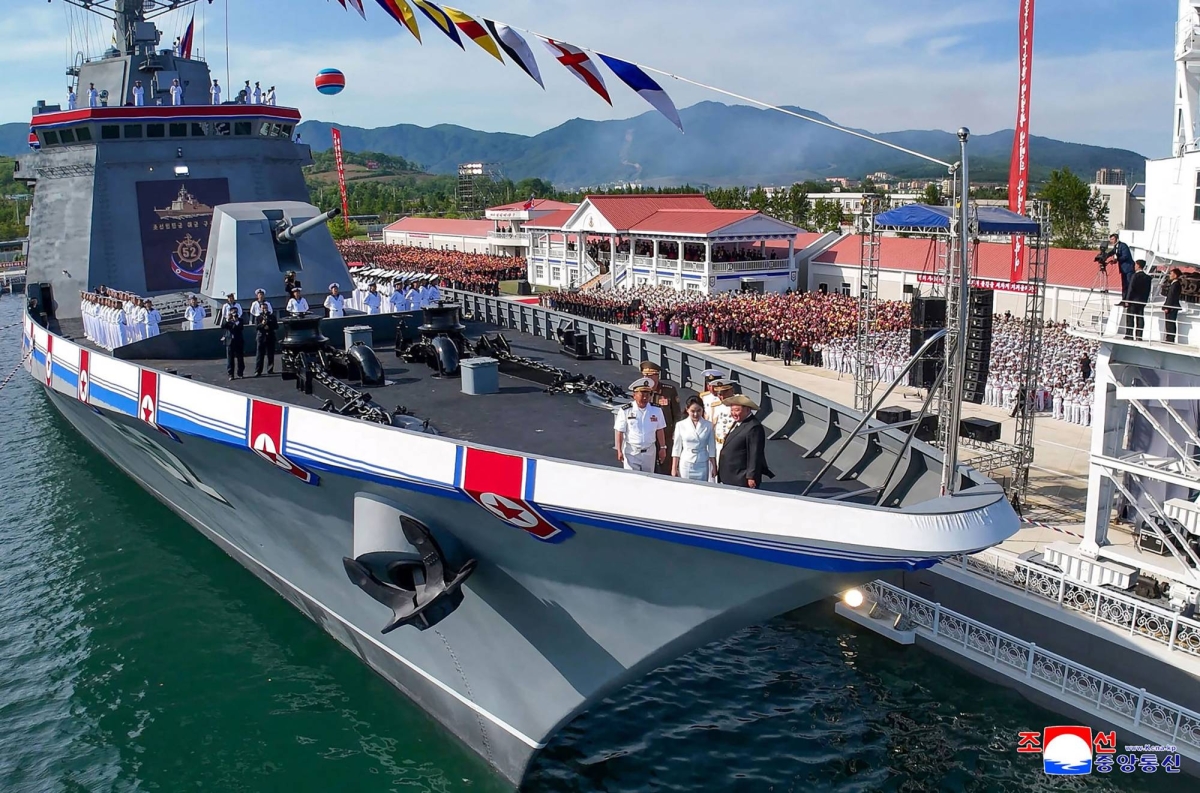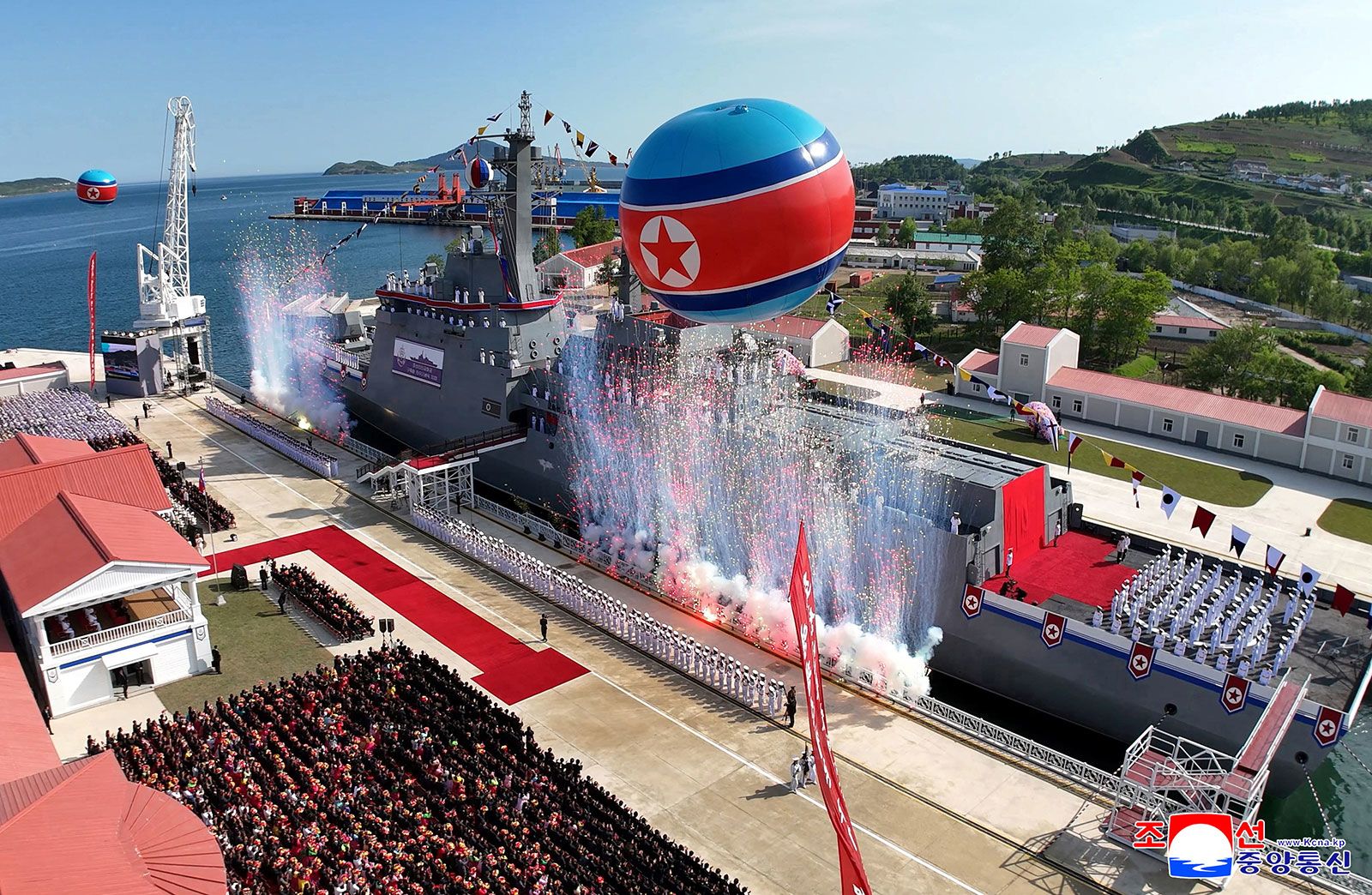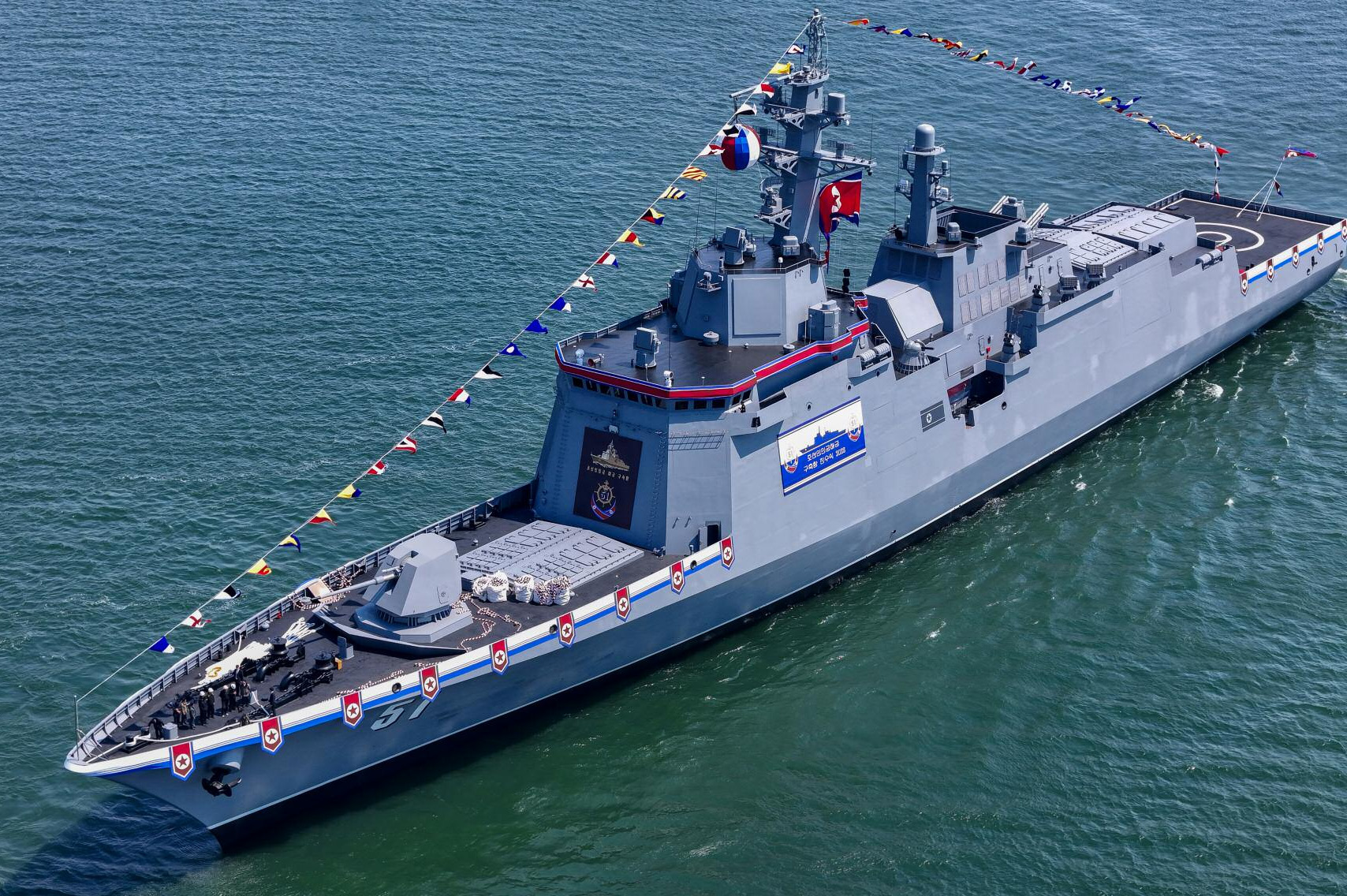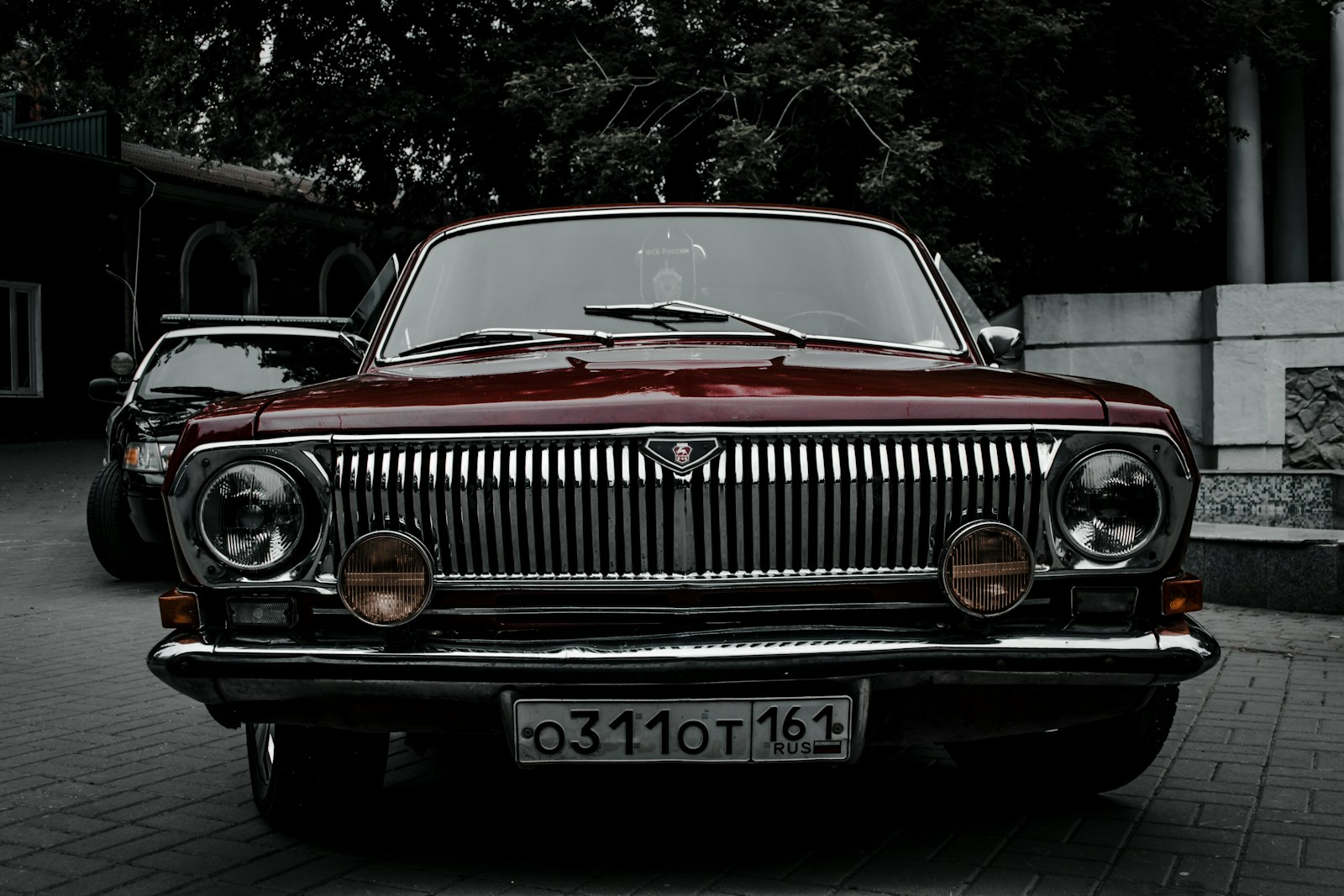
A recent incident involving one of North Korea’s most advanced naval vessels has provided a rare glimpse into the challenges and priorities of the reclusive state’s military modernization drive. Following a dramatic launch failure in late May that saw a new 5,000-tonne destroyer partially capsize, international observers, aided by commercial satellite imagery, have tracked the regime’s urgent efforts to rectify the situation and restore the damaged asset.
The initial mishap occurred on May 21 during a side-launch ceremony that was notably attended by North Korean leader Kim Jong Un. The event, intended to showcase a significant step forward for the country’s naval capabilities, turned into a public setback when a transport cradle detached prematurely, causing the ship to slide off the slipway improperly and become partially submerged at the pier.
Kim Jong Un’s reaction to the failure was swift and severe. According to the Korean Central News Agency (KCNA), he branded the incident a “criminal act caused by absolute carelessness, irresponsibility, and unscientific empiricism” and ordered a probe into the circumstances surrounding the botched launch. The leader emphasized that the failure had “severely damaged the [country’s] dignity and pride,” vowing consequences for those responsible.
The immediate fallout from the incident saw significant internal repercussions. KCNA reported that at least four officials were arrested or detained as part of the probe. Among those reportedly held was Ri Hyong-son, the deputy director of the ruling Workers’ Party’s Munitions Industry Department and a member of the powerful Central Military Commission, which oversees the Korean People’s Army and military policy development. The regime’s main military committee stated that those responsible would be held accountable for their “unpardonable criminal act,” signaling the high stakes involved in the military modernization program.

Despite the initial embarrassment and damage, North Korea quickly moved to salvage the vessel. Reports from state media on Friday, June 6, indicated the warship had been refloated and towed to the northeastern port of Chongjin for initial assessment. These claims were corroborated by commercial satellite images reviewed by multiple news agencies and specialist sites, including Reuters, 38 North, and NK News.
Satellite imagery played a crucial role in confirming the progress. Images taken by Planet Labs on Thursday, June 5, showed the stricken destroyer upright and afloat near the same pier where the launch failure occurred. Later images, such as those taken by Maxar Technologies on Sunday, showed the vessel had been moved to a drydock facility in the port of Rajin.
Researchers at 38 North noted that the effort to right the ship, observed in satellite images on Thursday, appeared to be a manual process. They reported seeing workers on the quay using tethers and barrage balloons attached to the vessel’s hull to balance and subsequently bring it back to an upright position. Some of the balloons were reportedly still attached to the vessel in later images.

U.S. military experts expressed surprise at the speed of the salvage operation. Analyst Carl Schuster, a former U.S. Navy captain, commented on the unexpected swiftness. He told CNN that the application of “Sheer manpower and – let’s face it – an innovative approach to righting the ship, delivered a solution in two weeks that people like me didn’t expect for four to six,” highlighting the regime’s resourcefulness in overcoming the immediate challenge.
Following the refloating and initial assessment, the warship was moved to the port of Rajin for the next phase of repairs. Located near North Korea’s short border with Russia, Rajin is part of the Rason special economic zone. While not equipped for major shipbuilding on the scale of Chongjin, it possesses facilities capable of handling modest repairs and maintenance work, according to Yu Jihoon, director of external cooperation and an associate research fellow at the Korea Institute for Defense Analyses.

Rajin’s geographical proximity to Russia is seen by analysts as potentially significant. Yu Jihoon described it as “a key node for North Korea’s efforts to deepen economic and potentially military ties with Moscow.” This assessment aligns with reports, such as a 2024 report from the Modern War Institute at West Point, which called the Rason economic zone “a significant point of North Korea–Russia cooperation, recently implicated in North Korean arms shipments to Russia for use in Ukraine.”
Speculation has arisen regarding the possibility of Russian assistance in the repair process, particularly if complex internal systems were damaged by saltwater. Experts like retired South Korean Adm. Kim Duk-ki suggested to CNN that if the ship’s sonar or depth finders, typically located on the bow, were damaged, it might require foreign help to repair. He noted that North Korea is believed to lack the necessary technology for sonar systems and likely imported them from China or Russia previously.

However, this view is not universally held among South Korean analysts. South Korean lawmaker Yu Yong-weon relayed his country’s military assessment to CNN, stating that the likelihood of sonar damage was relatively low. The South Korean military assessed that “The vessel’s external damage doesn’t seem significant, and the main issue seems to be the water flooding into the warship,” suggesting the primary task would be drying out internal spaces, machinery, and electronics and purging them of saltwater and dried salt.
The repair deadline set by Kim Jong Un adds pressure to the operation. He ordered the “perfect restoration of the destroyer will be completed without fail” before a major ruling party meeting scheduled for later this month. KCNA reported that the repairs at the Rajin drydock were expected to take seven to 10 days, seemingly keeping pace with Kim’s timeline.
Despite the official pronouncements, outside experts remain skeptical about the feasibility of a full restoration to operational capability within such a short timeframe, especially after significant water exposure. Yang Uk, an analyst at Seoul’s Asan Institute for Policy Studies, expressed doubt to the Associated Press. He noted, “Considering the time they needed to raise the vessel, they would have had less than two weeks to carry out the real repair work.” Yang questioned whether that limited window would be “enough time to completely fix everything and bring the vessel to a state where it’s operationally capable,” deeming it “highly unlikely.”
South Korean expert Lee Illwoo also pointed out that critical systems such as the engine room and missile launchers are vulnerable to saltwater damage and might require more extensive repair or replacement than can be completed quickly. He suggested that the move to Rajin, with its proximity to Russia, further indicates the potential for Russian technical assistance in addressing these complex issues.

Regardless of the immediate challenges, the damaged warship represents a crucial asset for North Korea’s naval modernization goals. It is the country’s second known destroyer and is seen as integral to Kim Jong Un’s efforts to upgrade his country’s naval forces, which still largely consist of older, Soviet-era ships in poor condition. The vessel is believed to be a twin sister to the destroyer Choe Hyon, which North Korea unveiled in April.
Pyongyang has touted these vessels as its largest and most technologically sophisticated warships to date. State media claims the ships are equipped with advanced systems, including air and missile defense capabilities, and are designed to launch nuclear-capable ballistic and cruise missiles. Kim Jong Un himself previously supervised test-firings of missiles from the deck of the Choe Hyon, underscoring the importance placed on these new platforms.
North Korea announced in April that the Choe Hyon would “enter into operation early next year” or early 2026. The acquisition and expected deployment of these 5,000-tonne destroyers, despite the recent setback, are seen by Western analysts as marking a significant upgrade to North Korea’s naval capabilities, potentially boosting both offensive and defensive capacities, even if the North Korean navy is still considered far inferior to those of Western powers.




